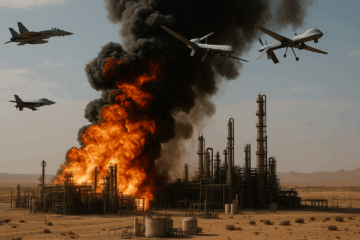This report provides an in-depth look at recent developments in global defense, with a particular focus on North Korea’s and Russia’s military actions and the United States’ strategic response. Readers will find insights into North Korea’s latest ICBM test and its increased alignment with Russia, including deploying troops to support Russia in Ukraine. The report examines the implications of these actions on U.S. and South Korean security, highlighting their joint efforts to counter nuclear threats and deepen military cooperation. Additionally, the report covers the latest Congressional Research Service update on the LGM-35A Sentinel ICBM program, set to replace the aging Minuteman III as the land-based leg of the U.S. nuclear triad. Readers will gain an understanding of the program’s funding, strategic goals, and modernization efforts, with deployment anticipated by 2029. Key sections explain the financial investments, technical advancements, and defensive rationale behind the Sentinel, emphasizing its importance for future deterrence against growing global threats. The report underscores the interconnectedness of regional conflicts and U.S. defense initiatives, painting a comprehensive picture of the evolving geopolitical landscape.
Key Issues Include:
Korea and Russia News
- North Korean ICBM and Military Collaboration with Russia
- North Korea recently launched its most powerful intercontinental ballistic missile (ICBM) to date, signaling its intent to counter U.S.-South Korean alliances. Following this, the U.S. and South Korea held joint air drills as a show of force.
- Reports indicate North Korean troops in Russian uniforms are heading to Ukraine, marking a potentially destabilizing support for Russia’s war efforts. North Korea may seek advanced nuclear technology from Russia as part of their cooperation.
- Strategic Reactions and Military Developments
- The U.S. and South Korea have pledged deeper military and technology cooperation, emphasizing nuclear defense scenarios. Meanwhile, North Korea’s alignment with Russia is raising concerns about heightened regional instability and the potential extension of the Ukraine conflict.
ICBM Report to Congress on LGM-35A Sentinel
- Program Overview
- The LGM-35A Sentinel, set to replace the aging Minuteman III, forms the land-based leg of the U.S. nuclear triad. The Sentinel will enhance the U.S.’s deterrent capabilities with an expected procurement of 634 missiles, modernized silos, and facilities across strategic areas
- Funding and Development
- The FY2025 budget includes $3.7 billion from the Department of Defense and $1.1 billion for the W87-1 warhead from the National Nuclear Security Administration. Modernization will involve upgrades to 450 silos and over 600 facilities, establishing the Sentinel as a long-term, modular system to address future threats
- Strategic Justifications
- As a critical element of U.S. defense, the Sentinel program is designed to meet evolving threats, preserve industrial capabilities, and ensure cost-effective lifecycle management. The Air Force targets initial deployment in 2029.
Get the full report!
About the Author

Peter Huessy
Mr. Peter Huessy is President of his own defense consulting firm, Geostrategic Analysis, founded in 1981, and through 2021, Director of Strategic Deterrent Studies at the Mitchell Institute on Aerospace Studies. He was the senior defense consultant at the National Defense University Foundation for 22 years. He was the National Security Fellow at the AFPC, and Senior Defense Consultant at the Air Force Association from 2011-2016.
Mr. Huessy has served as an expert defense and national security analyst for over 50 years, helping his clients cover congressional activities, arms control group efforts, nuclear armed states actions, and US administration nuclear related policy, budgets, and strategies, while monitoring budget and policy developments on nuclear deterrence, ICBM modernization, nuclear arms control, and overall nuclear modernization.
He has also covered nuclear terrorism, counterterrorism, immigration, state-sponsored terrorism, missile defense, weapons of mass destruction, especially US-Israeli joint defense efforts, nuclear deterrence, arms control, proliferation, as well as tactical and strategic air, airlift, space and nuclear matters and such state and non-state actors as North Korea, China, Iran, Syria, Venezuela and Hezbollah, Hamas, and Al Qaeda. This also includes monitoring activities of think tanks, non-governmental organizations, and other US government departments, as well as projecting future actions of Congress in this area. His specialty is developing and implementing public policy campaigns to secure support for important national security objectives. And analyzing nuclear related technology and its impact on public policy, a study of which he prepared for the Aerospace Corporation in 2019.




